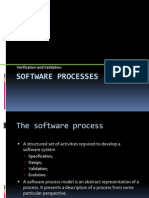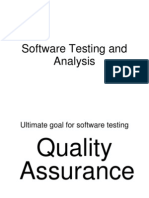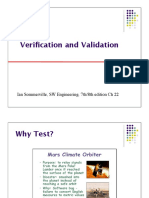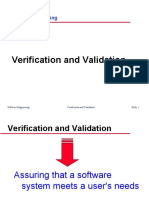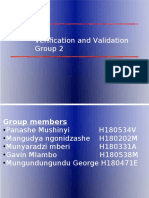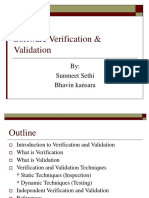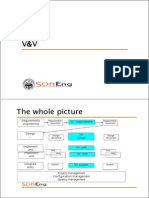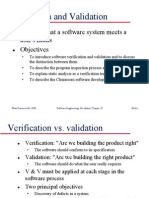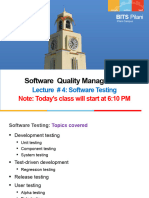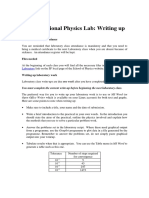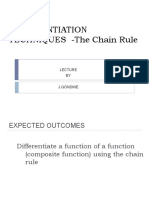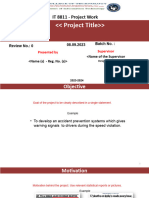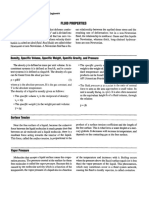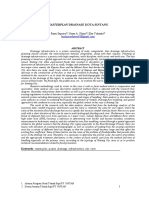0% found this document useful (0 votes)
96 views32 pagesSE 07 Software Process
The document discusses software processes and verification and validation (V&V). It describes common software process models like waterfall, evolutionary development, and component-based development. It also covers V&V techniques like inspections, testing, and the differences between verification and validation. Key V&V goals are establishing confidence that software is fit for purpose and discovering defects, rather than being completely free of defects.
Uploaded by
Exia CloneCopyright
© © All Rights Reserved
We take content rights seriously. If you suspect this is your content, claim it here.
Available Formats
Download as PDF, TXT or read online on Scribd
0% found this document useful (0 votes)
96 views32 pagesSE 07 Software Process
The document discusses software processes and verification and validation (V&V). It describes common software process models like waterfall, evolutionary development, and component-based development. It also covers V&V techniques like inspections, testing, and the differences between verification and validation. Key V&V goals are establishing confidence that software is fit for purpose and discovering defects, rather than being completely free of defects.
Uploaded by
Exia CloneCopyright
© © All Rights Reserved
We take content rights seriously. If you suspect this is your content, claim it here.
Available Formats
Download as PDF, TXT or read online on Scribd
/ 32
